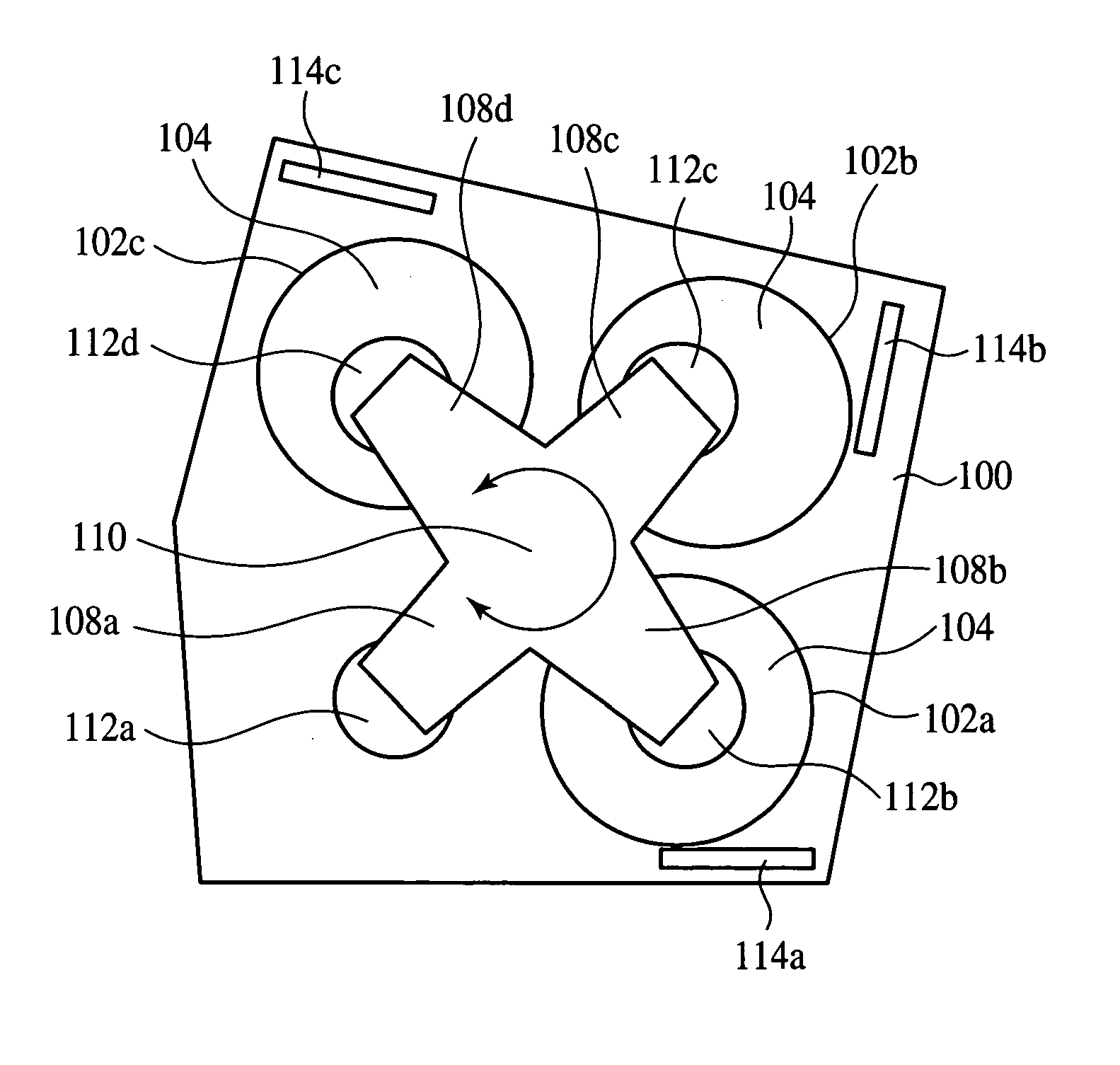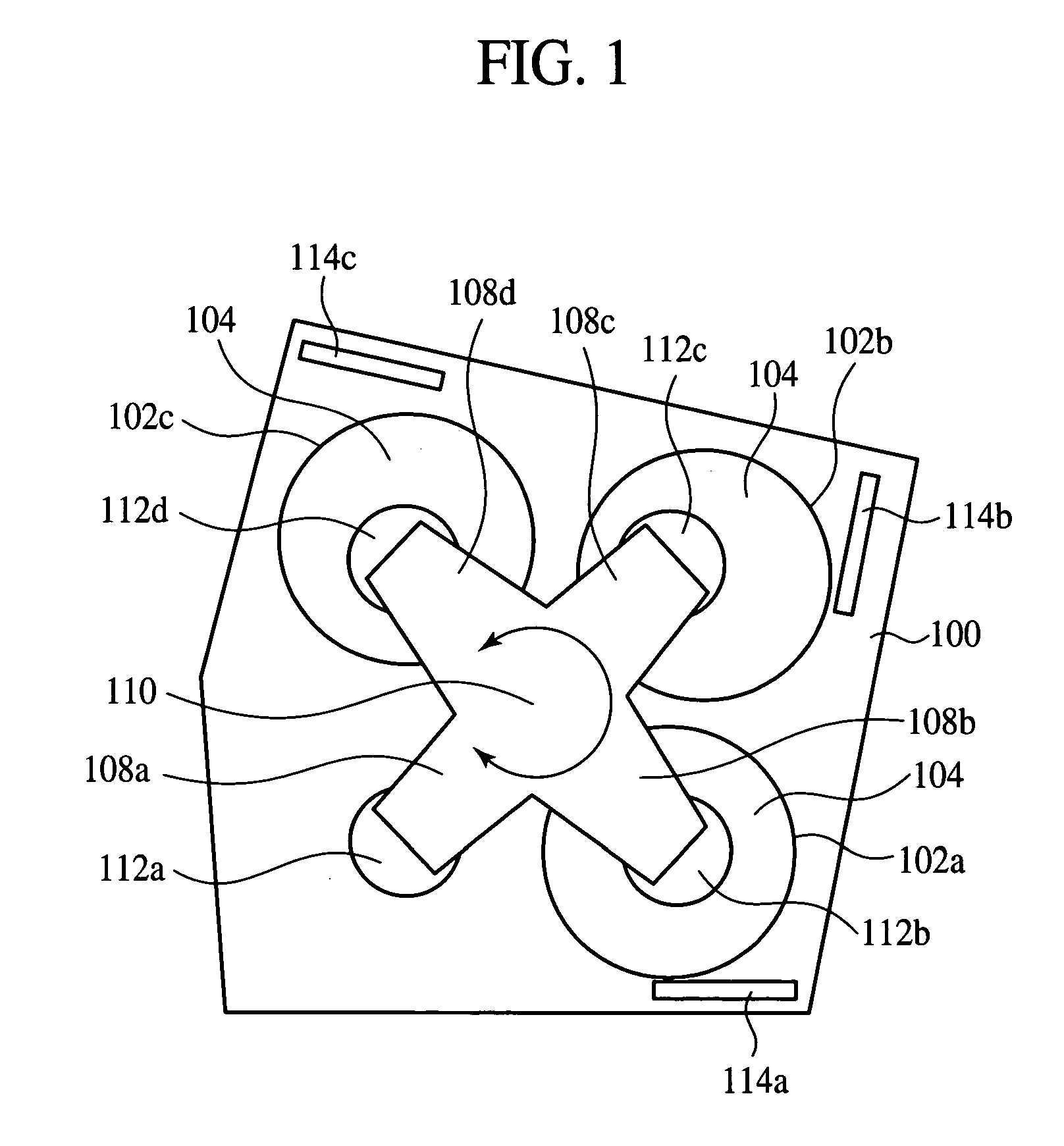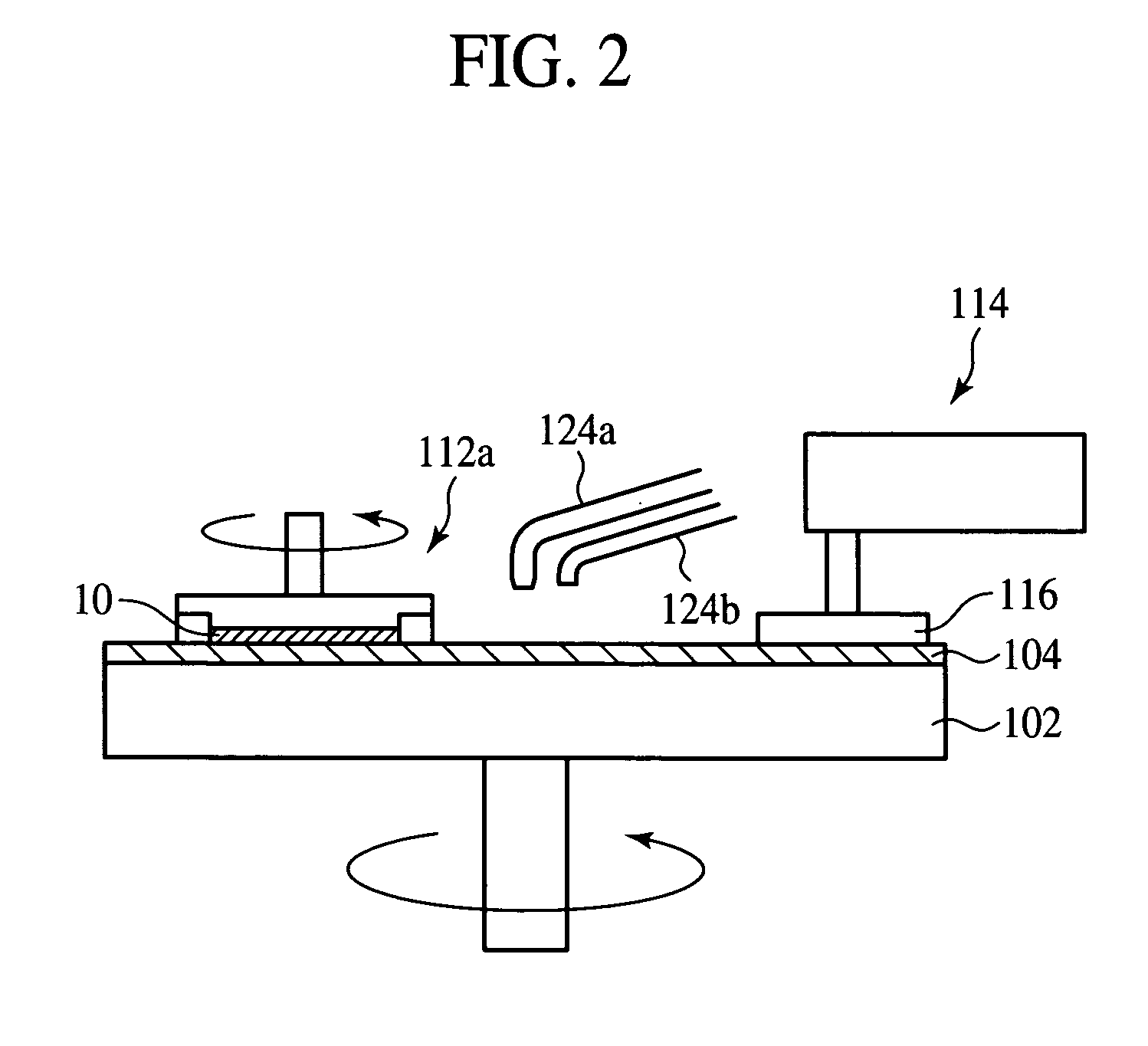Semiconductor device fabrication method
a technology of semiconductor devices and fabrication methods, applied in the direction of manufacturing tools, grinding machine components, lapping machines, etc., can solve the problems of insufficient device isolation function, bird's beaks reducing device regions, and low polishing pressure, etc., to achieve accurate detection, low polishing pressure, and high polishing pressure
- Summary
- Abstract
- Description
- Claims
- Application Information
AI Technical Summary
Benefits of technology
Problems solved by technology
Method used
Image
Examples
first embodiment
[0115] [A First Embodiment]
[0116] Before the semiconductor device fabrication method according to the present embodiment is explained, the polishing apparatus used in the present embodiment will be explained with reference to FIGS. 1 to 4. FIG. 1 is a plan view of the polishing apparatus. FIG. 2 is a side view of the polishing apparatus, which shows a part of the polishing apparatus shown in FIG. 1. FIG. 3 is a plan view of the polishing apparatus, which shows a part of the polishing apparatus shown in FIG. 1. FIG. 4 is an enlarged side view of the polishing apparatus, which shows a part of the polishing apparatus shown in FIG. 1.
[0117] As shown in FIG. 1, three rotary polishing tables 102a-102c are disposed on a base 100.
[0118] In the present embodiment, the polish of the surface of the film-to-be-polished is performed by, e.g., the polishing table 102a. The polishing tables 102b, 102c are usable to polish the surface of the film-to-be-polished.
[0119] As shown, polishing pads 10...
example 4
[0140] Example 4 indicates the polishing rate of the case shown in FIG. 10A where the polishing slurry is supplied to the central position P1 of the polishing pad 104, and the deionized water is supplied to the position P2 at a 12.5 cm-distance from the center of the polishing pad 104.
example 5
[0141] Example 5 indicates the polishing rate of the case shown in FIG. 10B where both the polishing slurry and the deionized water are supplied to the position P2 at a 12.5 cm-distance from the center of the polishing pad 104.
[0142] As seen in FIG. 8, the position for the polishing slurry to be supplied to and the position for the deionized water to be supplied to are changed from each other, whereby the polishing rate can be varied. Based on this, it is found that the position for the polishing slurry to be supplied to and the position for the deionized water to be supplied to are suitably set, whereby the polishing rate can be controlled.
[0143]FIG. 11 is a graph (Part 1) of intra-plane distributions of rates of polishing the films-to-be-polished with positions for the polishing slurry to be supplied to and positions for the deionized water to be supplied to suitably changed. Distances from the centers of the wafers are taken on the horizontal axis. The rates of polishing the fil...
PUM
 Login to View More
Login to View More Abstract
Description
Claims
Application Information
 Login to View More
Login to View More - R&D
- Intellectual Property
- Life Sciences
- Materials
- Tech Scout
- Unparalleled Data Quality
- Higher Quality Content
- 60% Fewer Hallucinations
Browse by: Latest US Patents, China's latest patents, Technical Efficacy Thesaurus, Application Domain, Technology Topic, Popular Technical Reports.
© 2025 PatSnap. All rights reserved.Legal|Privacy policy|Modern Slavery Act Transparency Statement|Sitemap|About US| Contact US: help@patsnap.com



